Table of Contents
Have you always wanted to try gymnastics as an adult? Maybe you're looking for a new way to get in shape, or maybe you're just curious about the sport. Whatever your reasons, Kizworld is here to help you get started. In this comprehensive guide, we'll cover everything you need to know about How to get started with gymnastics as an adult, from finding a gym to choosing classes to setting realistic goals. We'll also provide tips for staying safe while exercising and common mistakes to avoid. Whether you're a complete beginner or you have some experience with gymnastics, this guide has everything you need to know to get started.
How to Get Started with Gymnastics as an Adult: A Comprehensive Guide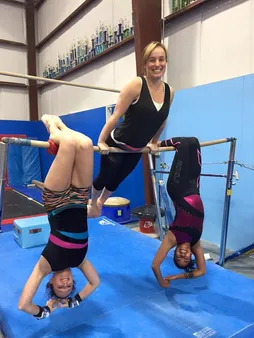
I. Find a Gymnastics Class or Gym
Find a Gymnastics Class or Gym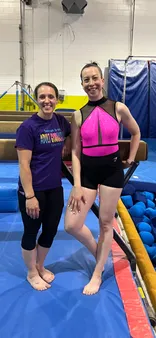
Choose the Right Gymnastics Classes
- Consider your age, fitness level, and goals.
- Choose a class that is appropriate for your skill level.
- Make sure the class is taught by a qualified instructor.
- Read reviews of the gym or class before you sign up.
Once you've found a few potential gymnastics classes or gyms, it's time to start narrowing down your options. Here are a few things to consider:
- Location: How far are you willing to travel to get to the gym?
- Cost: How much can you afford to spend on a gymnastics class?
- Schedule: What days and times are the classes offered?
- Class size: How many students are typically in a class?
- Equipment: Does the gym have the equipment you need to learn gymnastics?
Once you've considered all of these factors, you can make a decision about which gymnastics class or gym is right for you. If you're still not sure, you can always visit the gym or class in person to get a feel for the atmosphere and meet the instructor.
Here are some related posts that you might find helpful:
- The Benefits of Gymnastics for Kids
- The Best Gymnastics Equipment for Home Use
- How to Improve Your Flexibility and Mobility with Gymnastics
Set Realistic Goals
It's important to set realistic goals for yourself when you're starting out with gymnastics. Don't expect to be able to do a backflip on your first day! Start with small, achievable goals, such as learning how to do a handstand or a cartwheel. As you progress, you can gradually increase the difficulty of your goals.
Here are some tips for setting realistic goals:
- Start with the basics. Don't try to learn advanced skills before you've mastered the basics.
- Set small, achievable goals. Don't try to do too much too soon.
- Be patient. It takes time to learn gymnastics skills.
- Don't compare yourself to others. Everyone progresses at their own pace.
- Have fun! Gymnastics should be enjoyable, so make sure you're having fun while you're learning.
If you're struggling to achieve your goals, don't give up! Talk to your instructor for help. They can help you identify areas where you need to improve and develop a plan to help you reach your goals.
Here are some related posts that you might find helpful:
II. Prepare for Your First Gymnastics Class
Prepare for Your First Gymnastics Class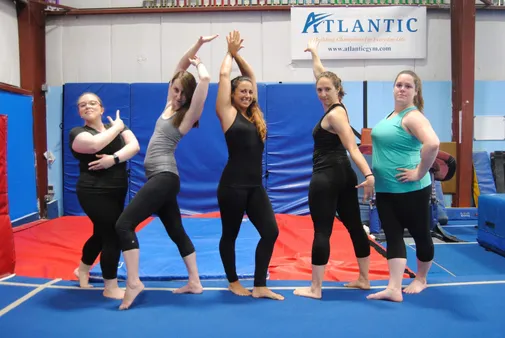
What to Wear
- Wear comfortable, form-fitting clothing that allows you to move freely.
- Avoid wearing loose or baggy clothing that could get caught on equipment.
- Wear shoes that provide good support and traction.
What to Bring
- Bring a water bottle to stay hydrated.
- Bring a towel to wipe away sweat.
- Bring a change of clothes in case you get sweaty.
What to Expect
- Your first gymnastics class will likely start with a warm-up.
- The warm-up will include exercises to stretch your muscles and get your heart rate up.
- After the warm-up, you will learn basic gymnastics skills, such as how to do a handstand, cartwheel, and backflip.
How to Stay Safe
- Always listen to your instructor and follow their instructions.
- Never attempt a skill that you are not comfortable with.
- Use spotters when practicing new skills.
Have Fun!
Gymnastics is a great way to get exercise, learn new skills, and have fun. So relax, enjoy yourself, and don't be afraid to try new things.
If you're interested in learning more about gymnastics, check out our other articles on the topic:
Item | Yes/No |
Comfortable clothing | |
Shoes with good support and traction | |
Water bottle | |
Towel | |
Change of clothes |
III. Gymnastics Skills for Beginners
Gymnastics Skills for Beginners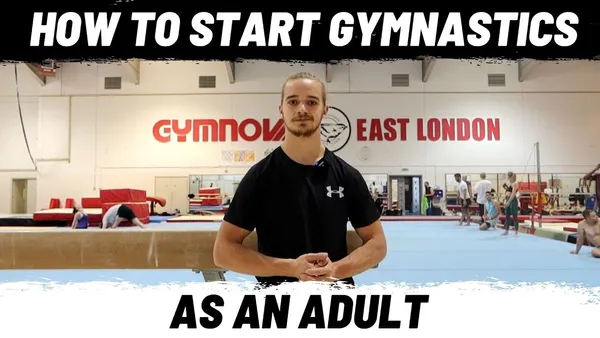
If you're a beginner gymnast, there are a few skills you'll need to master before you can move on to more advanced moves. These skills include the handstand, cartwheel, back handspring, and back tuck. Once you've mastered these basics, you'll be well on your way to becoming a skilled gymnast.
Skill 1: Building a Strong Gymnastics Foundation
Building a strong gymnastics foundation is essential for preventing injuries and improving overall balance, coordination, and flexibility. Start with the recommended activities for beginners, ensuring you receive professional guidance. Check out our guide on How to Get Started with Gymnastics as an Adult for additional insights. Regular exercise and a balanced diet will also boost your energy levels and overall well-being.
Skill 2: Handstand
The handstand is one of the most basic, yet challenging gymnastics skills. It requires strength, flexibility, and balance. For beginners, start by practicing against a wall for support. Once you can hold a handstand for a few seconds, try doing it without the wall.
Skill 3: Cartwheel
The cartwheel is another fundamental gymnastics skill. It's a great way to learn how to control your body in the air. To do a cartwheel, start by standing with your feet shoulder-width apart and your arms extended overhead. Bend your knees and swing your arms down while simultaneously thrusting your legs up into a back handspring position.
Skill | Description | Tips |
|---|---|---|
Handstand | Balancing with both hands on the ground and feet in the air | Start against a wall for support. |
Cartwheel | Flipping over in a circular motion | Swing your arms down while thrusting your legs up. |
Back Handspring | Somersaulting backwards with your hands on the ground | Keep your body straight and toes pointed. |
Skill 4: Back Handspring
The back handspring is a more advanced gymnastics skill, but it's still possible for beginners to learn with proper instruction. To do a back handspring, start by standing with your back to a wall. Bend your knees and swing your arms up while simultaneously jumping backwards into a back tuck position. Once you've landed, stand up and repeat.
Skill 5: Back Tuck
The back tuck is the most advanced skill on this list, but it's also one of the most rewarding. To do a back tuck, start by standing with your feet shoulder-width apart and your arms extended overhead. Bend your knees and swing your arms down while simultaneously jumping backwards into a back tuck position. Land on your feet with your knees bent and your arms extended overhead.
IV. Tips for Staying Safe and Avoiding Injuries
Tips for Staying Safe and Avoiding Injuries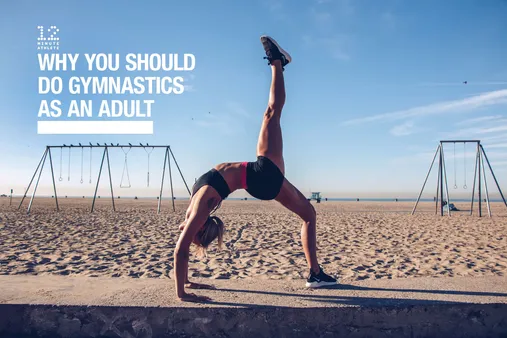
- Wear proper safety gear: This includes a helmet, elbow pads, knee pads, and wrist guards. These will help protect you from injuries in case of a fall.
- Start slowly and gradually increase your intensity: This will help your body get used to the new activity and reduce your risk of injury.
- Listen to your body and take breaks when needed: It's important to rest when you're feeling tired or sore. Pushing yourself too hard can lead to injury.
- Stay hydrated and eat a healthy diet: Eating a healthy diet and drinking plenty of water will help your body recover from exercise and reduce your risk of injury.
- Get enough sleep: Getting enough sleep will help your body recover from exercise and reduce your risk of injury.
Find a Gymnastics Buddy or Group
Working out with a buddy or group can make gymnastics more fun and motivating. It can also help you stay on track and avoid injuries. When you're working out with others, you're more likely to push yourself harder and try new things. You're also more likely to be encouraged to stick with it, even when you're feeling tired or sore.
Have Fun!
The most important thing is to have fun while you're doing gymnastics. If you're not enjoying yourself, you're less likely to stick with it. Find ways to make gymnastics fun for yourself, such as trying new things, playing games, or working out with friends. The more you enjoy gymnastics, the more likely you are to continue doing it and reap the benefits.